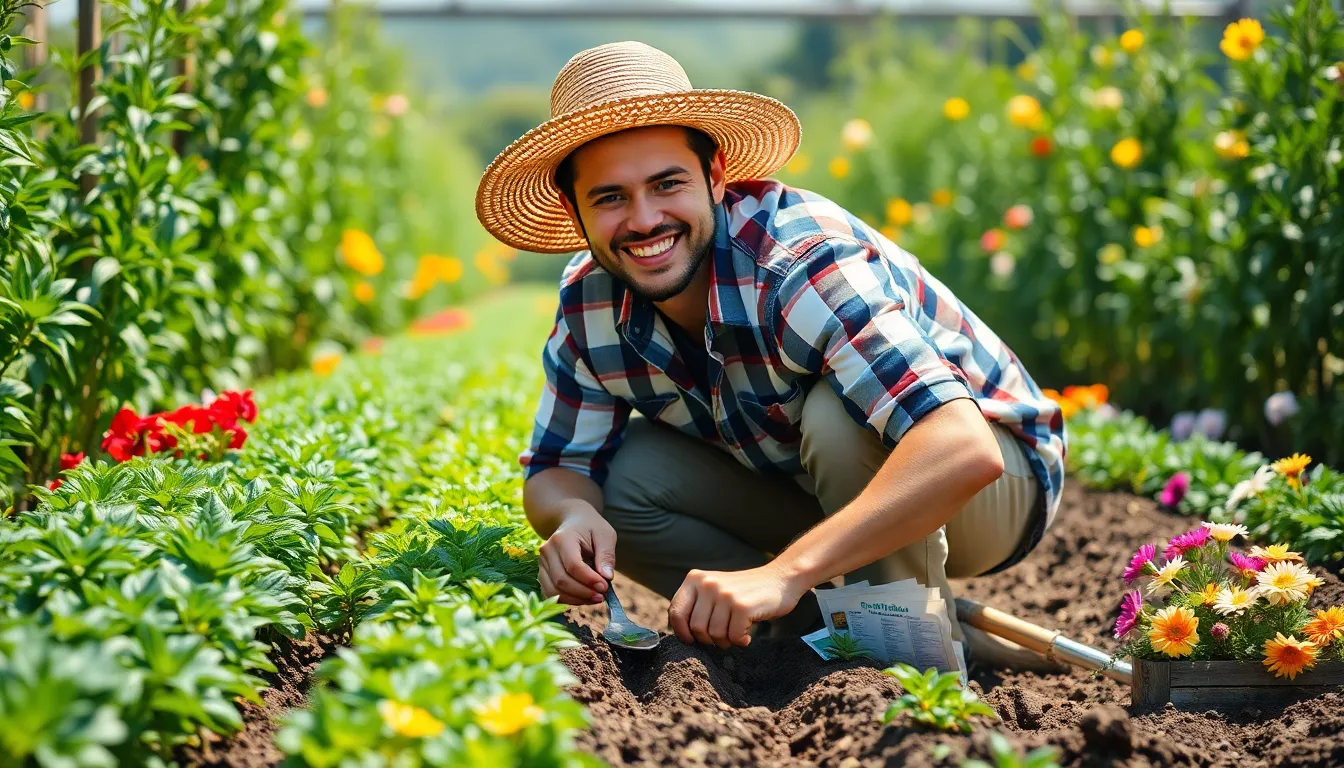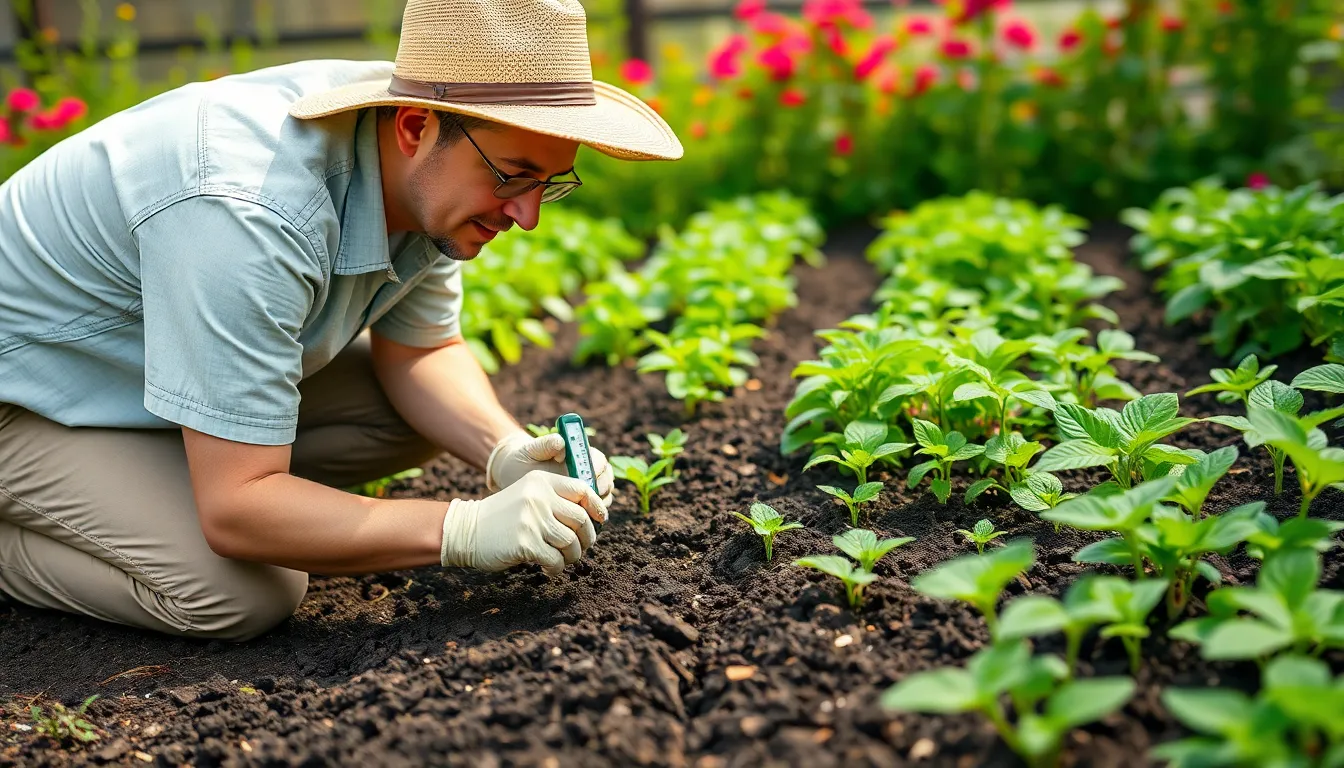Physical Address
304 North Cardinal St.
Dorchester Center, MA 02124

Timing is everything, especially when it comes to planting. Imagine putting seeds in the ground only to discover they’re as confused as a cat in a dog park. The best time to plant can make or break a garden, turning a barren patch into a lush paradise or leaving it looking like a scene from a horror movie.
Timing plays a crucial role in successful gardening. Understanding planting seasons ensures that plants thrive and yield bountiful harvests.
Cool season plants flourish in temperatures ranging from 50°F to 70°F. Examples include lettuce, peas, and spinach. These plants thrive when planted in early spring or late summer, before the frost arrives. Optimal germination occurs when soil temperatures stay consistently cool. Many gardeners start these seeds indoors six to eight weeks before the last frost date, providing a head start. This strategy allows for an earlier harvest in the spring or an extended growing season in the fall, maximizing production.
Warm season plants prosper in temperatures above 70°F. Common varieties such as tomatoes, peppers, and cucumbers need warm soil for germination. It’s best to wait until after the last frost to plant these seeds directly in the garden. Typically, gardeners sow seeds indoors four to six weeks prior for earlier yields. Transitioning seedlings outdoors should happen when nighttime temperatures consistently reach 60°F. Timing ensures that warm season crops mature fully, offering improved flavors and better yields.

Timing depends on several factors that directly affect planting success. Understanding these factors helps gardeners optimize their planting efforts for healthier plants and better yields.
Climate plays a crucial role in determining the best planting time. Different regions experience varying weather patterns that influence plant growth. For example, USDA plant hardiness zones classify regions based on average minimum temperatures, guiding gardeners on suitable planting windows. Additionally, local precipitation patterns impact soil moisture levels, which affects seed germination and plant health. Recognizing patterns such as early spring warmth or late frost dates provides valuable insight for planning planting schedules. Successful gardens often reflect a gardener’s awareness of their unique climate conditions.
Soil temperature significantly influences seed germination rates. Most seeds germinate in specific temperature ranges, typically from 50°F to 85°F. For instance, warm season crops like tomatoes thrive best when soil temperatures exceed 70°F. Monitoring soil temperatures ensures that seeds are planted when conditions are favorable for growth. Gardeners can utilize soil thermometers to gauge temperature accurately. If the soil is too cold, seeds may rot or struggle to sprout. Thus, planting at the right soil temperature causes substantial differences in yield quality and timing for harvests.
Understanding regional differences in planting times is crucial for successful gardening. Local climate and temperature variations significantly influence when to plant seeds.
Northern regions typically experience shorter growing seasons. Gardeners should focus on cool season plants like lettuce and peas, best planted in early spring. Late summer also provides an opportunity for a second planting. Frost dates can extend into early summer, making it essential to plan accordingly. Soil temperatures often remain lower, so seeds may germinate more slowly. By monitoring soil warmth, gardeners can optimize their planting schedules, ensuring plants thrive before harsher winter conditions arrive.
Southern regions enjoy longer growing seasons, often allowing for multiple crops each year. Warm season plants like tomatoes and peppers should be planted after the last frost, typically in late spring. Temperatures frequently exceed 70°F, creating ideal conditions for these plants. It’s beneficial to plant cool season varieties in late winter or early spring before summer heat sets in. Monitoring local weather patterns helps ensure soil moisture levels remain adequate for optimal growth. By planting at appropriate times based on regional conditions, gardeners in the South can enjoy bountiful harvests throughout the year.
Timing plays a crucial role in successful gardening. Each plant type has specific planting times to maximize growth and yield.
Cool season vegetable crops include lettuce, peas, and spinach. These thrive best when planted in early spring or late summer, during temperatures between 50°F and 70°F. Conversely, warm season varieties, such as tomatoes, peppers, and cucumbers, prefer temperatures above 70°F. Gardeners should plant these after the last frost. Starting seeds indoors provides an advantage, allowing for earlier harvests and potentially higher quality yields. Timing matters, particularly in northern regions where cool season crops dominate. With careful planning, gardeners can navigate the shorter growing seasons effectively.
For flowering plants, timing significantly influences blooms and overall health. Cool season flowers like pansies and snapdragons flourish in early spring or fall, preferring the milder temperatures of 50°F to 65°F. In contrast, warm season flowers such as marigolds and zinnias should wait until after the last frost for planting. These varieties thrive in warmer temperatures, ideally above 65°F. Monitoring local frost dates ensures optimal planting times. Also, sowing seeds indoors can enhance flower production and prolong blooming periods, enriching the garden experience. Understanding these seasonal preferences empowers gardeners to craft vibrant and successful flower displays.
Accessing reliable tools and resources streamlines planning for optimal planting times. Utilizing these elements enhances the gardening experience.
Gardening calendars provide valuable insights into specific planting dates. These tools help gardeners track seasonal changes and frost dates relevant to their region. Many online platforms and local gardening centers offer customized calendars. A gardening calendar for northern regions highlights planting cool season crops in early spring. Conversely, southern calendars indicate ideal times for warm season plants after the last frost. Keeping one of these calendars close assists gardeners in aligning their activities with the best possible conditions.
Local agricultural extensions serve as excellent resources for farmers and gardeners alike. They offer personalized guidance based on regional climate and soil conditions. Many extensions provide access to educational programs focused on local growing practices. Expert advice on pest control, soil management, and plant selection helps gardeners achieve better results. Additionally, these extensions often conduct workshops that educates individuals about the latest techniques in gardening. Utilizing their resources ensures that gardeners stay informed and successful throughout the growing season.
Timing plays a pivotal role in gardening success. By understanding the optimal planting times for both cool and warm season plants, gardeners can significantly enhance their overall yield and garden health. Monitoring local climate conditions and soil temperatures ensures that seeds are sown under the best circumstances.
Utilizing gardening calendars and local agricultural resources empowers gardeners to make informed decisions. With the right knowledge and tools at their disposal, they can cultivate thriving gardens that provide bountiful harvests and vibrant blooms throughout the seasons. Embracing these practices transforms gardening from a chore into a rewarding experience.